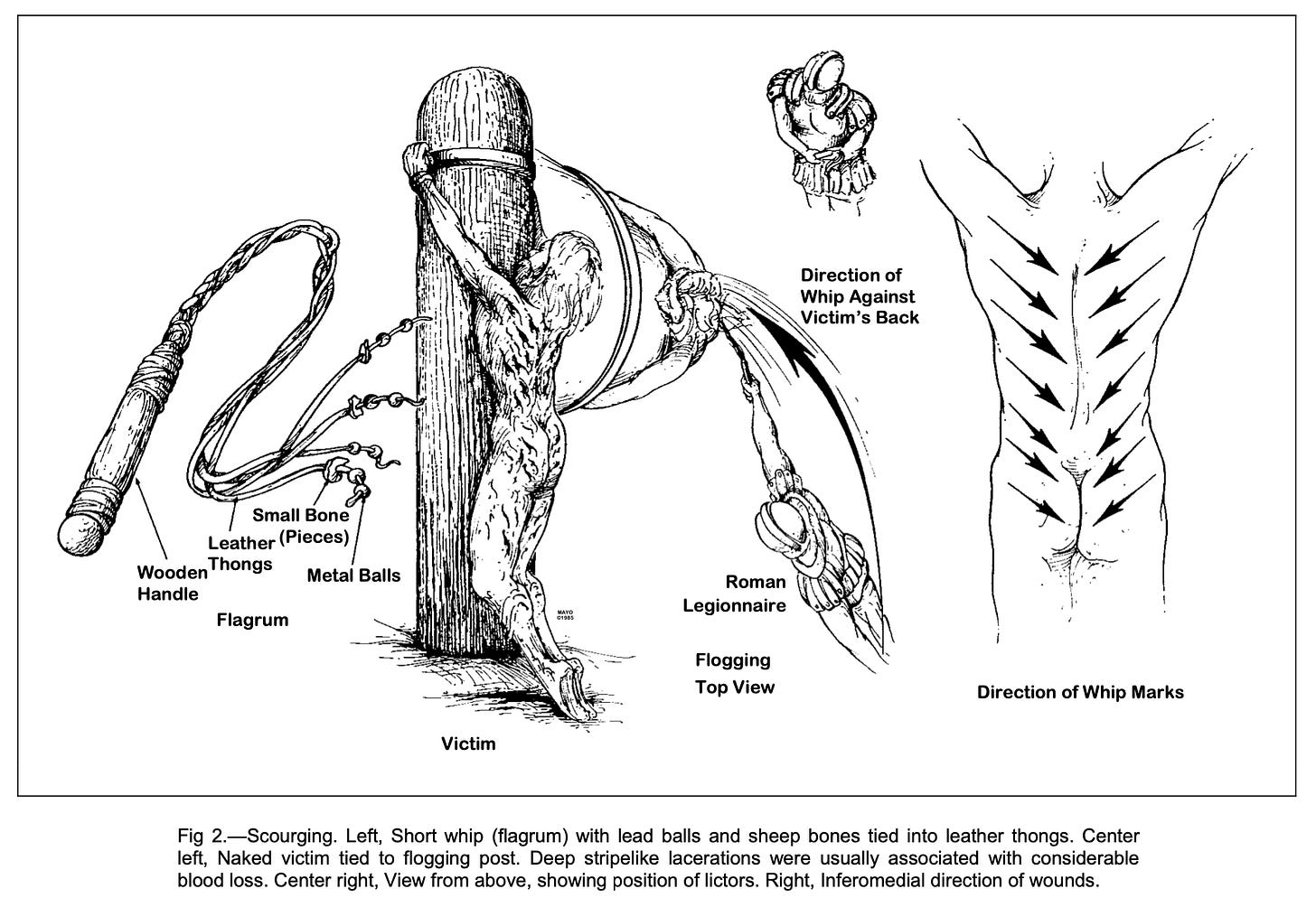The Medical Article Every Christian Should Read at Least Once
Contemplating the Crucifixion During Holy Week
Today is Thursday of Holy Week, the day that Jesus gathered his disciples in the upper room for the Last Supper. He knew these were his final words to his disciples before his death. A few hours later he was betrayed, arrested, falsely accused, mentally tortured by mocking, physically tortured by flogging, and sentenced to death. About noon on Friday, they forced him to carry his own cross to The Place of the Skull and there, John simply states, “they crucified him” (John 19:18).
John doesn’t provide detail about what it means to be crucified because his original audience already knew. They had witnessed Roman crucifixions. They had seen the torn flesh and spilled blood. They had smelled the odor of leaking bodily fluids from a dying man. They had heard the anguished cries and nauseating screams. John didn’t need to highlight the cruelty of crucifixion. They already knew.
But we don’t. Not really. Talking about crucifixion today is like two people talking about storming the beaches of Normandy who have never been in combat. They’ve seen movies and documentaries. But they’ve never seen men kill each other with weapons designed to disintegrate human beings. Never felt the chaotic terror. Never heard the panicked screams. Never smelled burning human flesh.
Death by crucifixion, from the Latin word for cross (crux), is so hideously awful that it gave us the word “excruciating,” an adjective that means “intensely painful; tormented.”
Understand What He Did
Yet Jesus went to the cross willingly. It’s easy to say the words, but harder to contemplate their meaning. What did that entail?
In 1986, the Journal of the American Medical Association (JAMA) published a now-famous article “On the Physical Death of Jesus Christ.” It’s hard to read because of the polysyllabic medical terminology and the graphic nature of the subject, but I recommend that every Christian read it at least once in his or her life. In cool, detached, and clinical terms, the authors describe one of the cruelest forms of execution ever devised by man with the goal of stating the exact cause of Jesus’ death. I recommend you set aside some time to read the whole article by clicking here, but here’s a summary statement:
Jesus of Nazareth underwent Jewish and Roman trials, was flogged and was sentenced to death by crucifixion. The scourging produced deep stripelike lacerations appreciable blood loss, and it probably set the state for hypovolemic shock as evidenced by the fact that Jesus was too weakened to carry the crossbar (patibulum) to Golgotha. At the site of crucifixion, his wrists were nailed to the patibulum, and after the patibulum was lifted onto the upright post, (stipes) his feet were nailed to the stipes. The major pathophysiologic effect of crucifixion was an interference with normal respirations. Accordingly, death resulted primarily from hypovolemic shock and exhaustion asphyxia. Jesus’ death was ensured by the thrust of a soldier’s spear into his side. Modern medical interpretation of the historical evidence indicates that Jesus was dead when taken down from the cross.
Understand Why He Did It
What motivated Jesus to willingly stay the course that led to the cross? The Bible offers two main motivations.
First, he loved the Father. Within the fellowship of the Trinity there is eternal and perfect love. Father, Son, and Holy Spirit were in perfect agreement in their plan to redeem sinners. The Father would send the Son, and the Son would submit to the Father. In obedience, the Son accepted the demotion of the incarnation and “being found in human form, he humbled himself by becoming obedient to the point of death, even death on a cross” (Phil. 2:8).
Second, he loved us. “I am the good shepherd,” said Jesus, “The good shepherd lays down his life for the sheep” (John 10:11). He assured his disciples, “Greater love has no one than this, that someone lay down his life for his friends. You are my friends if you do what I command you (John 15:13–14).
How much does he love us? So much that he accepted the excruciating death that we deserve. Contemplating the crucifixion of Jesus led Philip Bliss to write one of the most enduring hymns of the church:
Man of Sorrows, what a name For the Son of God who came Ruined sinners to reclaim
Hallelujah, what a Savior
Bearing shame and scoffing rude In my place condemned He stood Sealed my pardon with His blood
Hallelujah, what a Savior
Indeed. What a Savior.





Amazing love how can it be that you my King should die for me. 🙌🏻❤️🙌🏻❤️
so excellent